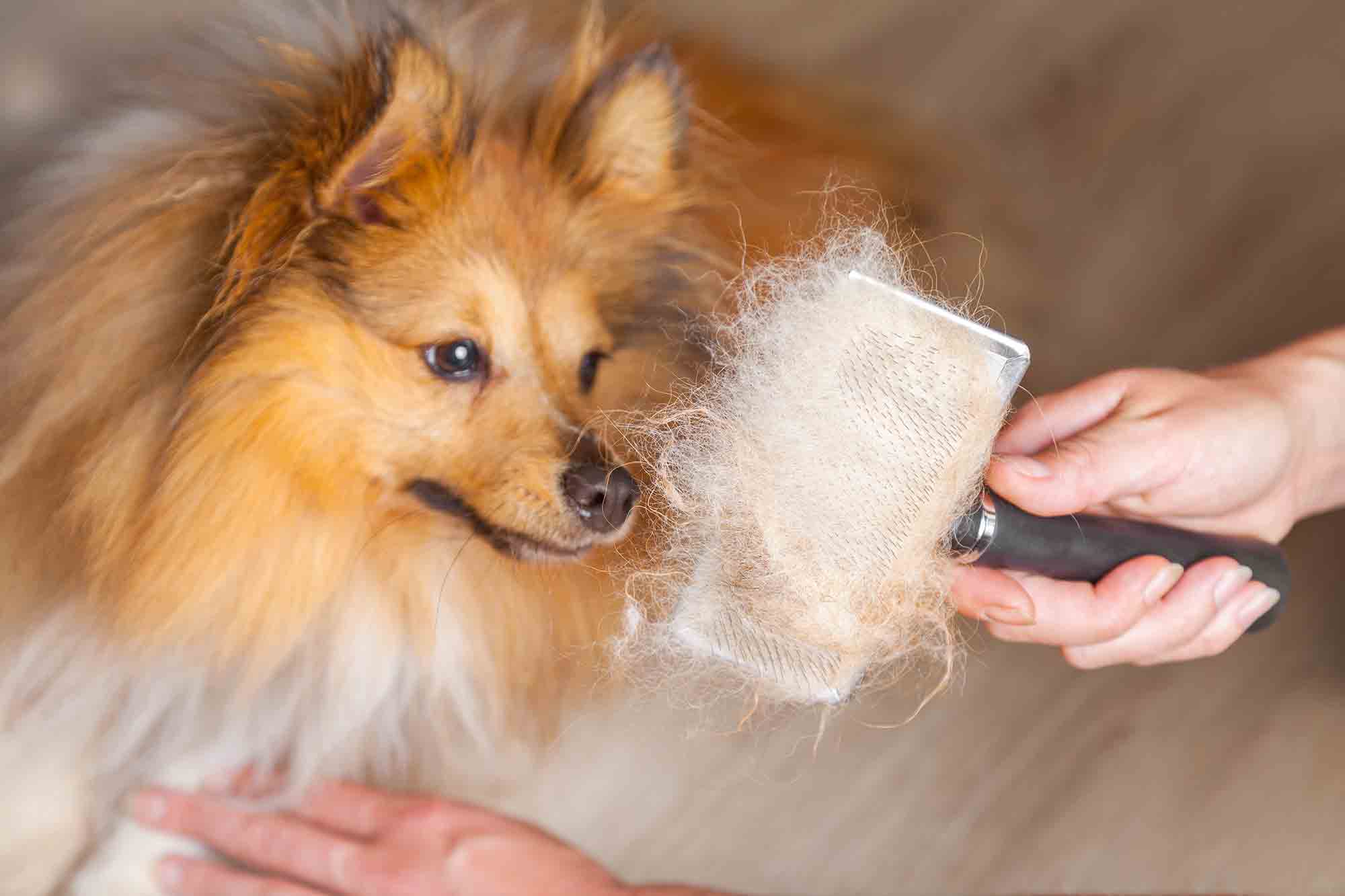The Pet Hair Battle: Getting It Under Control for Good
 If you share your space with a dog or cat, you share your space with their fur. Pet hair seems to have a mind of its own, working its way onto our clothing, furniture, carpets, and every nook and cranny imaginable, regardless of our unceasing attempts to banish it from our homes.
If you share your space with a dog or cat, you share your space with their fur. Pet hair seems to have a mind of its own, working its way onto our clothing, furniture, carpets, and every nook and cranny imaginable, regardless of our unceasing attempts to banish it from our homes.
Here at Rocklin Ranch Veterinary Hospital, we deal with pet hair just as much as anyone, and over the years we have come up with a variety of effective ways to keep it under control.
Protect and Prevent
Limiting the amount of pet hair that flies free in your home is the crucial first step in getting this problem under control
- Brushing – Taking a few minutes each day to brush your pet outside or in the garage will cut down significantly on the amount of fur you have to deal with inside the home. Every so often, give your pet a full grooming, complete with a bath, blow-dry, and brush out (either at home or with a professional groomer).
- Furniture – Use washable slipcovers or old sheets to protect your furniture from pet hair. If your pet regularly sleeps on your bed or couch, lay a blanket over the area and wash it frequently.
- Rugs – Area rugs can be placed in areas where pet hair tends to collect to prevent it from migrating throughout the home.
- Pets – Training your pet to stay off the furniture (while providing a cozy bed or two, of course) will go a long way toward keeping hair to a minimum.
Pet Hair Removal Strategies
Because it’s impossible to fully prevent pet hair from collecting in your home, these tried and true techniques will help you tackle the bulk of the hairy mess:
- Vacuum regularly, use the hose attachment to reach out of the way areas, such as underneath beds and furniture
- Sweep and dust mop hard floors daily
- Use a damp rubber glove to remove hair from couches and chairs
- Microfiber dusting cloths pick up stray hairs from shelves and countertops
- Keep lint rollers stashed conveniently throughout the home to remove pet hair from your clothing
- Launder bedding (yours and your pet’s) weekly, and rub a dryer sheet across pillows and blankets to remove stray hairs in between washings
When to Worry
Shedding is a normal process for dogs and cats, and the amount can vary depending on the season, breed, and whether or not your pet lives exclusively indoors. If your pet is experiencing excessive hair loss, he or she should be seen by a veterinarian as it could be an indication of an underlying health concern such as:
- Parasites
- Fungal or bacterial infection
- Poor nutrition/nutrient absorption issue
- Environmental or food allergies
- Kidney, liver, thyroid, or adrenal problems
- Certain medications
- Sun damage
- Cancer
Please call your team at Rocklin Ranch with any questions and concerns you have about your four-legged friends.

